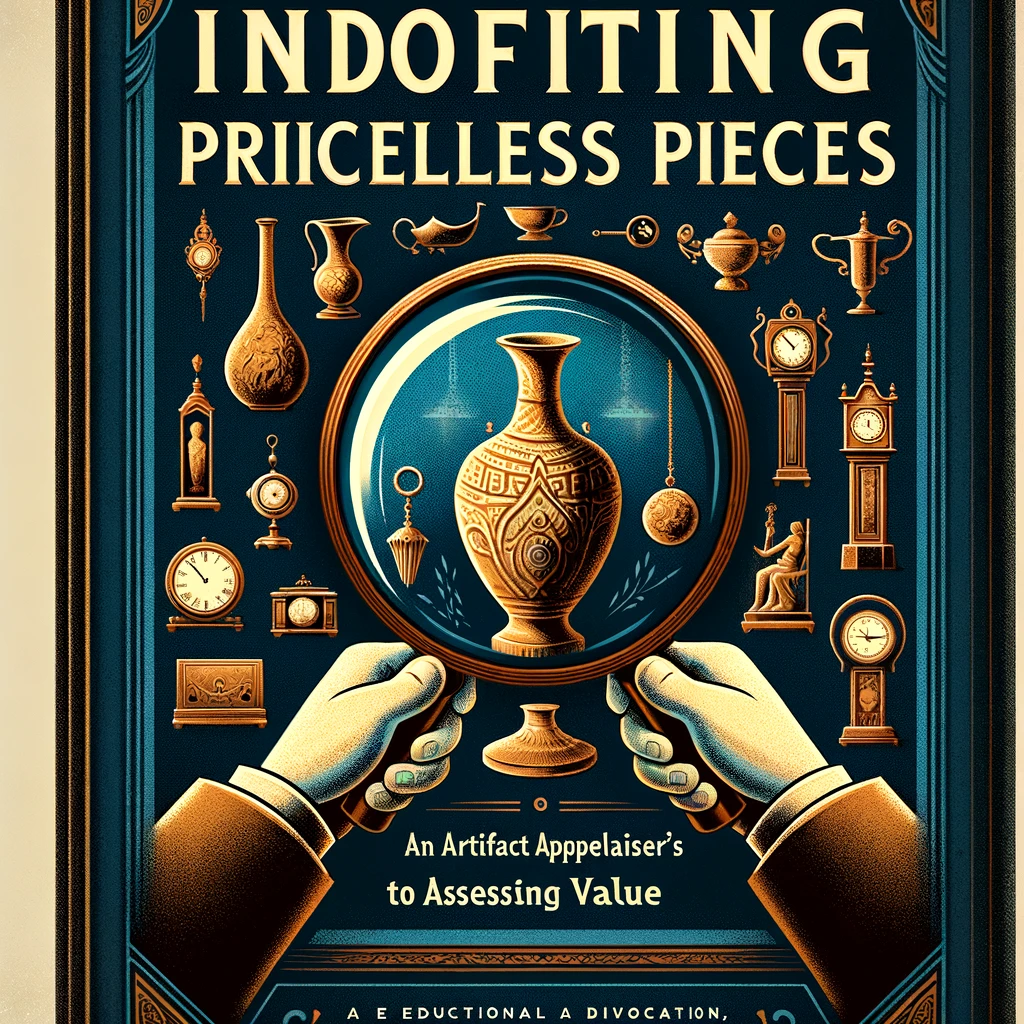As an experienced artifact appraiser, I often ask, “What makes this old thing valuable?” People are curious whether the vase gathering dust in their attic, the ancient coin passed down from grandpa, or the tribal mask picked up on vacation could secretly be worth a fortune.
In this comprehensive guide from an industry insider, I’ll demystify what makes an artifact financially and culturally valuable. You’ll discover what appraisers look for, tips for spotting precious items, common pricing factors, and techniques to determine authenticity and set fair prices.
Consider this your crash course in recognizing treasures hidden in plain sight! You’ll have the inside scoop on unearthing artifacts’ true worth by the end.
What Exactly Do Artifact Appraisers Do?
As an appraiser, my job involves conducting in-depth assessments on a vast array of items to opine on their:
- Authenticity – Separating genuine artifacts from fakes
- Significance – Determining historical or cultural importance
- Provenance – Tracing origin stories and ownership journeys
- Condition – Evaluating physical state and restoration needs
- Fair Valuation – Researching and assigning accurate market values
It’s essentially part history detective, part market analyst. My specialties center around Ancient Mediterranean and Mesoamerican antiquities, but appraisers study everything from fine art to fossils.
On a typical day, I scrutinize a Roman coin under a microscope, reference academic papers to assess an Egyptian shabti statuette, meeting with clients to discuss Native American textiles…it’s always an adventure!
How to Spot Valuable Artifacts: 7 Tips from an Expert Appraiser
Over years assessing thousands of artifacts, you develop an intuition for spotting precious objects. Here are my top tips consumers can use to identify possible hidden treasures:
🔎 Tip 1: Look for quality craftsmanship
Superior materials, ornate details, and evidence of skilled, labor-intensive production often increase value. These signify rare artistry and coveted luxury status in past eras.
🔎 Tip 2: Research markings, signatures, or symbology
Special stamps, engraved maker’s marks, or insignias can attribution pieces to renowned artisans making them highly desirable. Unique symbols may also link to important events or significant former owners.
🔎Tip 3: Determine age and era
Older artifacts tend to be rarer and more respected. Trace styles and materials to particular ancient civilizations or artistic movements. Specialized tests can confirm age. Condition matters more for older pieces.
🔎Tip 4: Assess condition and repairs needed
Artifacts in exceptional, undamaged condition are most prized by collectors. But even damaged goods can be conserved if fundamentally sound. Severely fragmented, hazardous, or irreparable items have lower marketability.
🔎 Tip 5: Verify backstories and previous owners
Well-documented origin stories, ownership records, and relevance to historical happenings increase intrigue, significance and market value. Mysterious backgrounds require more research but can result in exciting revelations!
🔎 Tip 6: Compare similar examples
Value is often benchmarked against equivalent artifacts of confirmed rarity and quality sold recently at major auction houses. If few comparable examples exist, uniqueness itself heightens desirability.
🔎 Tip 7: Confirm authenticity
Genuine artifacts are worth exponentially more than fakes or embellished tourist pieces modeled after ancient styles. Appraisers have various authentication techniques to expose imitations.
Follow these tips when encountering an interesting artifact. It’s possible you could uncover a coveted treasure other’s overlooked!
A Peek Inside the Appraisal Process
So exactly what steps do appraisers take when assessing an artifact’s value? Here’s an inside look:
👁️ Visual Inspection
First, we thoroughly examine the physical object, noting materials, construction methods, markings, repairs, or alterations. Specialized tools like microscopes, black lights and x-ray imaging uncover hidden details.
🕵🏻♀️ Background Research
Next, we investigate the artifact’s provenance and context. Consulting academic sources, auction records, museum databases and experts helps determine origins, ownership journey, cultural significance, and similarities to other known examples.
🔬 Scientific Analysis
We may conduct materials analysis or carbon dating to determine age and fabrication methods conclusively. These tests clarify authenticity.
📊 Valuation Methodology
We assign fair market value by comparing the artifact’s characteristics and backstory against equivalent items recently sold at major auction houses. Adjustments account for variances, current demand fluctuations, and appreciation over time.
📋 Appraisal Report
Finally, we compile complete documentation of the artifact details, valuation methodology, forensic analysis, historical contextualization, and final fair market appraisal into a credible report.
As you can see, appraising artifacts involves in-depth research, specialized equipment, market savvy and a keen eye!
What Impacts Artifact Values?
Many nuanced factors determine what price rare artifacts may realistically fetch on the open market. Here are the key drivers:
Provenance
- Well-documented origin stories and prestigious previous owners increase desirability and prices. Complete gaps are more questionable. Rarity
- One-of-a-kind pieces and scarce examples from lost cultures or eras are more valued by collectors and institutions. Items custom-made for royalty also appeal. Condition
- Artifacts in pristine, undamaged condition fetch premiums. But even damaged goods have value if fundamental integrity is sound enough for conservation. Craftsmanship
- Evidence of renowned artistry, luxurious materials, and technical skill positively impact prices. Exceptional quality denotes status. Subject Matter
- Fascinating imagery, symbolism connecting to momentous events, or links to influential historical figures enhance intrinsic value. Market Trends
- Demand and scarcity for specific artifact categories impact buyers’ willingness to pay at any given time. Competition also plays a role. Cultural Significance
- Ethnographic artifacts closely tied to group identity and living traditions may have special value to descendant communities regardless of market worth.
Applying this multi-factor assessment helps assign realistic numbers to one-of-a-kind relics.
Spotlight: Meissen Porcelain
Let’s examine how these concepts apply to a specific category of highly coveted antiques – Meissen porcelain.
History
Meissen porcelain originated at a German factory in 1710 as the first high-quality porcelain manufactured outside of Asia. The rare ingredients and production secrets gave Meissen a competitive edge. Its trademark insignia features crossed blue swords.
Unique Attributes
- Intricate hand-painting and modelling artistry
- Innovative forms like animal figurines and tea services
- Secret reddish-brown “iron red” glazing technique
- Cobalt blue underglaze and overglazed enamels
- Incorporated silver and gold elements
Valuation Factors
As authentic Meissen porcelain becomes increasingly scarce on the market, values climb. Perfect condition, elaborate decoration, rare experimental and early examples reach five to six figures at fine art auctions. The unique formulas, skilled artistry and trademark insignia make Meissen a white-hot collectible niche.
This example displays how artifacts with special attributes tied to a particular origin can become quite valuable over time. Learning to recognize the telltale signatures of coveted antique types takes appraiser know-how!
Key Takeaways
- Artifact appraisers serve the vital role of evaluating authenticity, assessing restoration needs, researching provenance, and determining fair valuations. Their opinions inform insurance policies, acquisitions, investments and legal transactions.
- Hallmarks of potentially precious artifacts include quality materials and craftsmanship, prominent markings/symbols, desirable age, reputable backstories, uniqueness, or links to influential historical people/events.
- Appraisers use a combination of visual examination, material analysis, market research and forensic authentication techniques to gauge an artifact’s characteristics and likely value.
- An artifact’s monetary value depends on various factors like physical condition, rarity, documented provenance, subject matter, cultural meaning, and current demand trends. Significant one-of-a-kind examples fetch the highest auction prices.
- Learning to recognize high-quality antiques tied to coveted origins – like Meissen porcelain’s signature crossed swords insignia – helps spot lucrative artifacts other’s overlook.
I hope this insider guidance empowers you to re-examine your artifacts with a strategic eye and uncover surprising treasures! Let the treasure hunt begin!
Frequently Asked Questions
What are the most counterfeited artifacts that you see?
Some universally forged artifacts I often have to authenticate include ancient coins, Native American pottery and rugs, Egyptian shabtis and scarabs, and expensive decorative antiques likes Fabergé eggs. Counterfeiters try to mimic valuable, coveted pieces.
How often do your appraisals differ drastically from the client’s expectations?
Quite frequently a difference emerges between what consumers expect versus professional appraisal, especially for heirloom artifacts with sentimental value. I’d estimate at least 25% of items get overestimated valuations. Communicating comparable sales is key to providing fair perspective.
What’s the most bizarre artifact you’ve ever appraised?
That honor would have to go to shrunken heads made by the Shuar tribe of the Amazon! Needless to say authentication methods were quite intricate for those rare tribal artifacts before auction. I’ve also appraised mummified cats, fossilized dinosaur eggs, and 200 year-old prosthetic eyes – always an adventure!
How can I get into antique dealing or auctioning?
The best way to gain expertise is start by learning from established industry professionals through mentorships, training programs, or specialist certificates at valuations firms. Building an eye for quality takes time. Many dealers and auction specialists first work in adjacent roles like collections management and restoration before progressing.
What advice do you have for safely cleaning or storing family heirlooms?
I always advise consulting a professional conservator before attempting do-it-yourself cleaning or repairs which could inadvertently cause permanent damage. For extended storage, archival materials like acid-free cardboard and anti-tarnish tissue paper will help block environmental damage. Maintaining stable, moderate humidity and temperatures is also key.


Average Rating